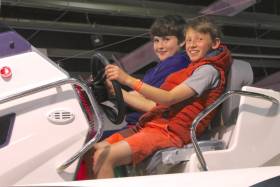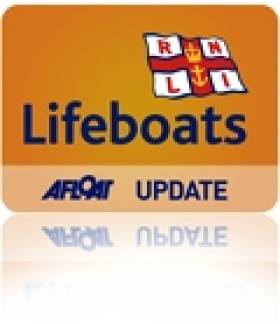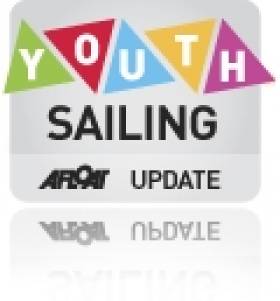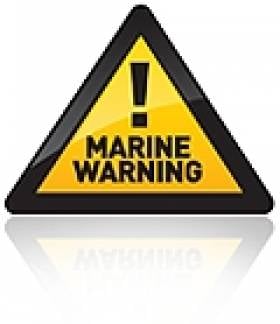Displaying items by tag: Anglesey
Adrenaline Junkies Will Love The All Wales Boat & Leisure Show 2020
Wales’ largest indoor watersport event takes place at the Anglesey Showground in Holyhead on 29-30 May next year.
The All Wales Boat & Leisure Show will feature the finest of personal watercraft and active watersport in a region that hosts some of the world’s best coastal waters and coastline, lakes, white water rivers and gorges.
The show connects together industry leaders in boat and leisure products and services across Wales, with not only watersport and boating enthusiasts but all those that have a passion for the great outdoors.
Discover a huge range of exhibitors, show events and activities where you can have a go, too — it’s a must-visit for boat owners, watersport lovers or families looking for a great day out.
Tickets are £10 for adults, £5 for children (under 4s free) and £20 for families, and also give access to the Anglesey Food Festival, Bangor Science Festival and Festival of Discovery.
Searches Resume For Light Aircraft Missing Over Irish Sea Off North Wales
Searches for a light aircraft that went missing between the Irish Sea and the Menai Strait off North Wales yesterday afternoon (Monday 25 November) were suspended overnight.
The aircraft, with one person on board, reportedly disappeared from radar near Puffin Island off Anglesey at lunchtime yesterday.
This prompted a major search operation that involved HM Coastguard teams from Penmon and Bangor, the coastguard helicopter from Caernarfon and RNLI lifeboats from Beaumaris, Moelfre and Llandudno.
Searches were set to resume this morning in an area around Penmon, on the opposite side of Anglesey from Holyhead.
RNLI Receives Thank-You After Cow Rescued from Irish Sea
#LIFEBOATS - The volunteer lifeboat crew at Trearddur Bay in Anglesey, north Wales have received a kind donation and a thank-you card from the owner of Daisy, a cow recently rescued after falling from a cliff into the Irish Sea.
Danielle Bosustow, aged eight, was so touched that the crew had rescued her pet she put pen to paper to thank them. Her thank you card reads: "Thank you so much for your help rescuing my cow Daisy. I am so happy to see her again."
Along with the thank you card was a kind donation from Danielle’s grandfather, a local farmer who visited the station to show his gratitude to the RNLI.
The volunteer crew sprung into action on 22 October last, following reports that a cow had fallen from a cliff at Porthdafarch.
The lifeboat launched and with the help of the local farmer, Daisy was located and towed to safety using a bridle. She was taken to a bay close by where she could safely reach dry land.
Alf Pritchard, press officer for Trearddur Bay RNLI said: "We were shown some photographs which were taken after Daisy’s ordeal and it was good to see she is none the worse for her experience.
"It’s so nice when people come back to let you know that what you have done is appreciated. As a charity, the RNLI also very much appreciates the donation."
Late Night Mayday Response for Holyhead RNLI
#LIFEBOATS - Holyhead RNLI's all-weather lifeboat was dispatched late on Wednesday night (24 October) in response to a distress call from a yacht in the Irish Sea.
The volunteer crew received the request from Holyhead Coastguard after a mayday call from the skipper of a 24-yacht off the northwest coast of Anglesey in North Wales.
The man, who was the only person aboard the vessel, was on his way to the Canary Islands when he made the call for assistance.
A helicopter from RAF Valley stood by the casualty until the lifeboat crew arrived to rescue him and tow his vessel back to Holyhead.
The yacht reportedly started to sink as it was towed into Holyhead harbour, but the lifeboat crew managed to secure the vessel alongside the boatyard slip.
Welsh Youngsters Learn at Ysgol y Môr (School of the Sea)
youthsailing – Schools from Ynys Môn (Isle of Anglesey) and Gwynedd have won praise from Welsh Government member Ieuan Wyn Jones for spearheading a revolutionary approach to education, which makes the marine environment a key part of learning.
At the Ysgol y Môr (School of the Sea) Race Day 2012, at the Plas Menai National Watersports Centre near Caernarfon, more than 200 children from 13 local schools demonstrated how they have developed their knowledge of subjects ranging from renewable energy technology to marine biology, as well as watersport skills, by taking part in the first initiative of its kind in the UK, being piloted over three years.
Mr Wyn Jones said: "I am very impressed with this pilot project. The schools have clearly got a great deal out of it and I want to work with the Ysgol y Môr team to see how we can develop it further."
Sponsored by nuclear power technology specialists EnergySolutions, who own Magnox Ltd, the day featured an inter-schools regatta of sailing, kayaking and windsurfing races: a marine renewables regatta, run by Engineering Your Future, showcasing pupils' work on solar powered boats, wind and water turbines, and fuel cell technology, culminating in a solar boat race; and a Classe de Mer (Classroom of the Sea) display, showcasing pupils' work on marine wildlife, conservation, maritime culture, history and landmarks on the Menai Strait, ocean sciences, coastal living and dune formation, art and literature.
The event also hosted an Ysgol y Môr Conference for 100 delegates, with Ieuan Wyn Jones AM as keynote speaker, a video about Nautisme en Finistere (Brittany's equivalent of Ysgol y Môr), and presentations by the region's head teachers and an independent assessor on the value of the programme.
Dave Callen, EnergySolutions' Engineering Manager at Magnox Wylfa Power Station, said: "Education is one of the keys to North West Wales' economic and cultural sustainability – and so are the region's marine resources, including energy. We are delighted to sponsor this inspiring event."
Hundreds of youngsters are learning subjects including renewable energy technologies and watersports.
Jon Philips, Director of Stakeholder Relations for the Nuclear Decommissioning Authority (NDA), one of the principal funders of the project, said: "The NDA is delighted to have supported this programme, which we hope will inspire future generations to consider the exciting employment and business opportunities associated with the coastal environment – creating an even more vibrant and exciting place to live and work."
Ysgol y Môr is the first initiative in the UK to use the marine environment as part of mainstream education.
It is modelled on a 30+ year educational programme in Brittany, which has been the driving force behind the growth of the region's highly successful marine industry. It has created major economic development and sustainable jobs, which have helped safeguard the Breton language and culture.
Ysgol y Môr is being piloted in the counties of Gwynedd and Ynys Môn. In the first phase, spanning three years, 1440 pupils from 16 schools are learning watersports skills. 1170 pupils are being taught a range of existing curriculum subjects in classes de mer ('classrooms of the sea'), across both counties.
The launch of Ysgol y Môr followed more than three years of development by North Wales Watersports and its partners. This included a fact finding mission for North Wales educationalists and local authority representatives in 2007 to Brittany, which has 20 dedicated 'classrooms of the sea' centres that have trained thousands of pupils.
The Ysgol y Môr programme is designed as a template for a new national approach to education, based on involving pupils more closely with their local environments, including mountains, forests and urban areas.
RNLI To Play Big Part in Olympic Torch Relay
#OLYMPICS 2012 - The RNLI will play a "key role" during the Olympic torch relay ahead of the London games this summer, as Yachting and Boating World reports.
On 28 May the Olympic torch is set to visit Anglesey in north Wales, when it is taken along the Menai Strait on board the RNLI's Annette Mary Liddington.
The torch will again be carried by RNLI volunteers on 18 July when it is ferried to shore from a tall ship in Dover harbour aboard the all-weather lifeboat City of London II.
Dover RNLI's operations manager Roy Couzens said: “We are very much looking forward to being involved on the day – and believe me, when that torch is at sea in our lifeboat, it couldn’t be in safer hands!”
The Olympic torch relay begins in Plymouth on 19 May and finishes at the Olympic Stadium on 27 July. Its two-month-long journey will take it throughout Britain and Northern Ireland, and includes a visit to Dublin on Wednesday 6 June.
An interactive map of the complete torch relay route is available on the official London 2012 website HERE.
Work Begins to Eliminate Sea Squirts in North Wales
#MARINE WILDLIFE - Work on exterminating sea squirts at a marina in north Wales has begun.
The £250,000 (€301,000) project by the Countryside Council for Wales involves attaching giant bags to the subsurface structures around the marina in Holyhead, which is hoped will stop the clean flow of water to the sea squirts, causing them to suffocate and die.
Marine biologist Rohan Holt, who is managing the project, said: “If we successfully eradicate the sea squirt, we will work hard to make sure that it does not recolonise.
"This will mean careful monitoring in Holyhead marina and other marinas and popular mooring areas throughout Wales to check that it hasn’t reappeared."
The sea creature threatens shellfish by spreading like a blanket across the seabed and other surfaces.
As previously reported on Afloat.ie, colonies of the invasive Japanese sea squirt are posing a throat to mussel and scallop bed in the Menai Strait between Anglesey and the mainland.
Boats from Ireland have been blamed for carrying the invasive pest into Holyhead.
The Daily Post has more on the story HERE.
Marine Notice: Hydrographic Survey in Irish Sea
#MARINE WARNING - The latest Marine Notice from the DTTAS advises all seafarers in the Irish Sea between north Dublin and north Wales to give a wide berth to the hydrographic and oceanographic survey operation in the area this week.
The SV Bibby Tethra (callsign 2EGF8) commenced survey operations yesterday (Monday 16 January) from offshore at North Beach in Rush to approximately 16 miles offshore north of Anglesey. The survey is scheduled for seven days, subject to weather delays.
The vessel will operate on a 24-hour basis, displaying appropriate day shapes and lights during survey operations, and will transmit an AIS signal. The vessel will be keeping a listening watch on VHF Channel 16 at all times during the operations.
Survey operations will involve towing survey equipment up to 100m astern of the vessel along pre-defined survey lines, which will restrict the vessel’s ability to manoeuvre.
Details of the survey area are included in a PDF of Marine Notice No 2 of 2012, which is available to read or download HERE.
Dublin Is Fly-Cruise Hub as 'Journey' Heads for Iberian Sun
Tonight's departure is for Holyhead, where the call to Anglesey also covers tours of Snowdonia, the impressive castles of Conwy, Caernarvon and Harlech and a stop to Bodnant. Following the Welsh call she is to visit Cobh. Other calls are to Bordeaux (overnight), Bibao, Gijon,Vigo and the final port of call is Lisbon on 7 September where passengers will remain in their cabins for an overnight stay. The next day there is a scheduled tour of the Gulbenkian Museum, the Jeronimos Monastery and Sintra.
On one-day the ship will spend the entire day at sea which will enable passengers to indulge further of the facilities such as the casino and entertainment in the theatre, for more click HERE. Fares for the Irish passengers of the 10-day cruise/11-day holiday started at €2,062 per person (cruise-only) based on the lowest grade twin cabin. After completion of the cruise in Lisbon they will take a flight to return to Dublin.
Azamara Journey formed part of the eight-strong series commissioned for Renaissance Cruises which collapsed a decade ago. They were built by Chantiers de l'Atlantique in St.Nazaire and were uninspiringly named as R One, R Two etc with the R Six now the re-named Azamara Journey.
As August and the high-season draws to a close that doesn't' stop the cruiseships calling as over twenty more are due in Dublin before the season closes. In total the port this year has handled some 90 cruiseships and 160,000 passengers. A further 65 callers so far are scheduled for 2012.
- Cobh
- Dublin Port
- Cruise Liners
- Princess Cruises
- Holyhead
- Anglesey
- Ports and Shipping
- Cobh Cruise Terminal
- Port of Dublin
- Cruise Liner news
- Trinity College
- Cruise ships
- Ocean Princess
- Azamara Club Cruises
- Azamara Journey
- Renaissance Cruises
- R6
- Powerscourt Gardens
- Gulbenkian Mseum
- Lisbon
- Western European Cruises
- Dublin cruise terminal
- Welsh cruise calls
- Welsh castles
- R Six
- Chantiers de l'Atlantique
Mussel Dredgers Make a Fleeting Trawl of Dalkey Sound
Two mussel dredger-trawlers made a rare transit of Dalkey Sound, last Friday, writes Jehan Ashmore.
The sound which is located to the south of Dublin Bay is not used by commercial traffic but is frequented by pleasure-craft, local fishing boats from Dun Laoghaire. In addition to occasional traffic by the Irish Naval Service, Marine Institute research vessel RV Celtic Voyager, the GSI's RV Keary and foreign tall-ships.

Dublin Bay. Photo Jehan Ashmore/ShipSNAPS
The vessels were making a southerly direction as they headed across Dublin Bay towards Dalkey Island. Mytilus lowered a mussel cage bucket into the sound which was dragged on two separate occasions over a short distance running parallel between the island and the coast.
The operation was all too brief as the Mytilus then proceeded into Killiney Bay followed closely astern by Branding. Upon entering the neighbouring bay, both vessels conducted dredging activity before continuing south beyond Bray Head.
Mussel grounds are located throughout certain hotspots in the Irish Sea and earlier this month, it is reported that there was a notable increase in mussel dredgers in Bangor, Northern Ireland. The dredgers were the Mytilus and Branding which berthed at the Co. Down harbour after a lengthy period of relative inactivity.
Mytilus was built in The Netherlands by Scheepwerf Van Os Yerseke B.V. and appeared in an episode of the successful BBC TV series 'Coast'. At the time of the broadcast she was registered at Beaumaris, Anglesey and was seen working in the northern approaches of the Menai Straits. The fishery grounds are ideally suited for the growing processes required in farmed mussel production.
Branding was also built by a Dutch shipyard, Kooieman in 1988 and her design is typical of the mussel dredgers based in Wexford. The market for mussels is mainly from the northern European countries of Belgium, France and the Netherlands.
- Dublin Bay
- Coast
- Marine Institute
- Northern Ireland
- naval service
- Dublin Bay News
- Anglesey
- Ports and Shipping News
- Island News
- RV Celtic Voyager
- TallShips
- RV Keary
- Geological Survey of Ireland
- GSI
- Mussel dredgers
- Mussel trawlers
- Mytilus
- Branding
- Dalkey Sound
- Fishery
- Menai Strait
- Beaumaris
- Banger
- Fish news
- BBC
- BBC TV series 'Coast'
- Belfastregistered
- Wexfordregistered
- Dutchbuilt
- Mussel markets
- Killiney Bay
- Bray Head







































































